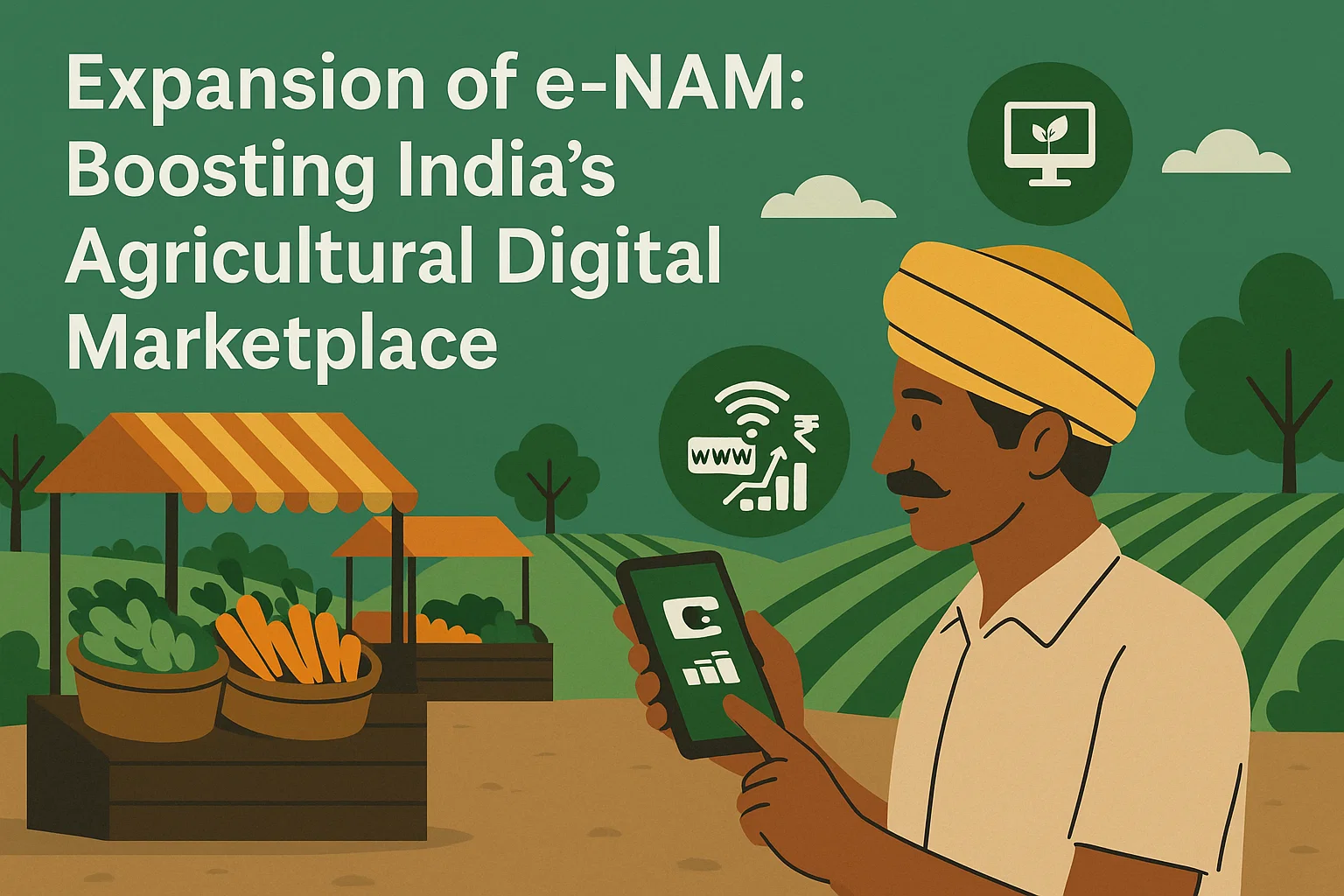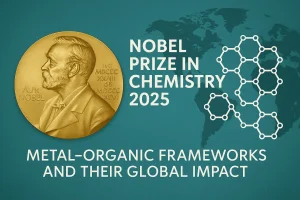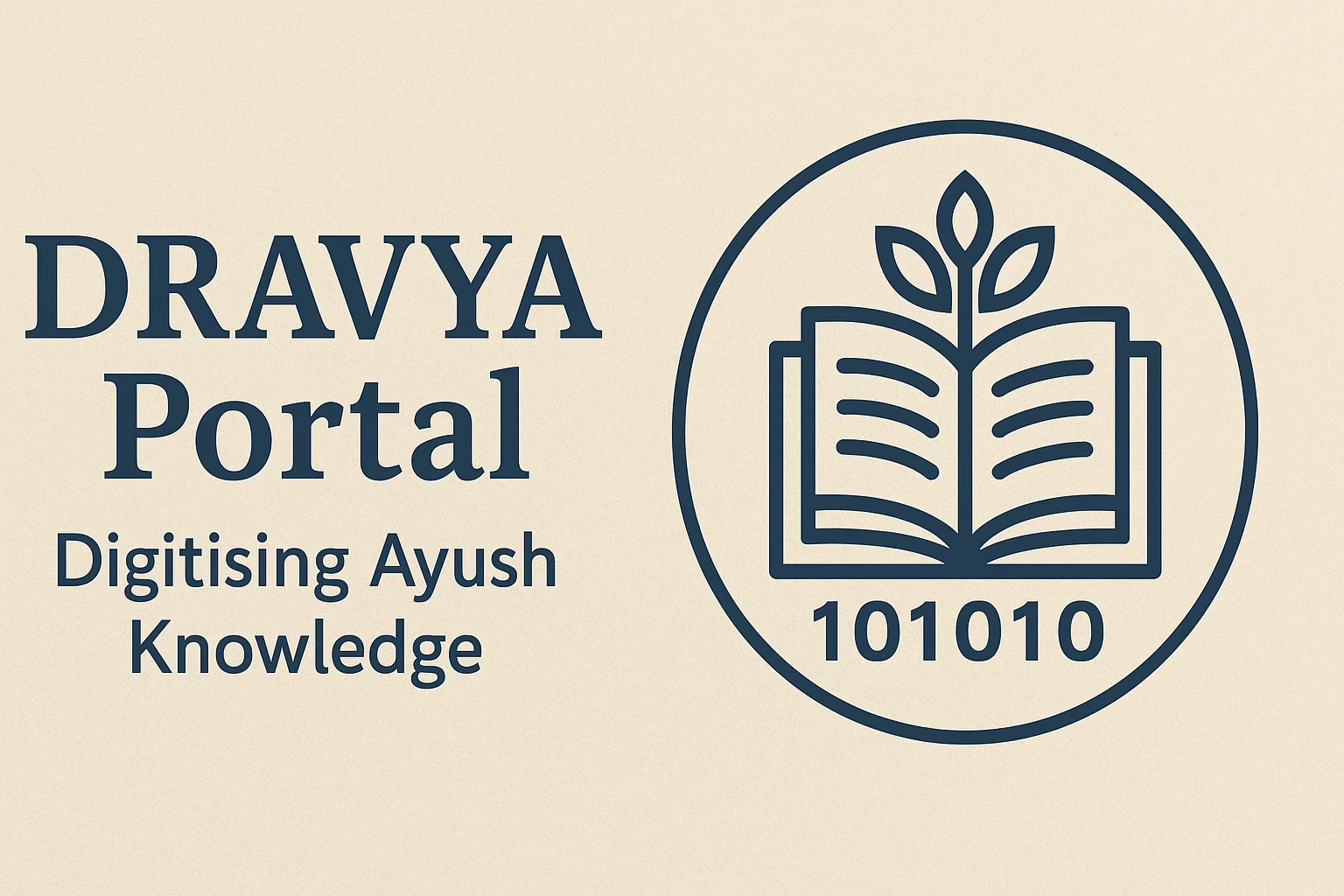Expansion of e-NAM: Boosting India’s Agricultural Digital Marketplace
The Government of India expands e-NAM by adding nine new commodities, including Green Tea, Ashwagandha, and Virgin Olive Oil, enhancing price transparency, market access, and digital trading for farmers nationwide.
Introduction
The Government of India has recently expanded the National Agriculture Market (e-NAM) by adding nine new agricultural tradable commodities, increasing the total to nearly 250 commodities. This initiative is part of the ongoing effort to modernise India’s agricultural markets and improve price discovery, transparency, and market access for farmers nationwide.
About e-NAM
Launched in 2016 by the Ministry of Agriculture & Farmers’ Welfare, e-NAM is a pan-India electronic trading portal designed to unify the country’s agricultural markets through digital integration. It connects Agricultural Produce Market Committee (APMC) mandis, as well as regulated and private markets, into a single online platform.
The platform facilitates:
-
Transparent, competitive, and real-time price discovery for farmers and traders.
-
Online payments and digital transactions.
-
Access to buyers across India, widening market opportunities.
-
Quality assaying systems linked to pricing.
Implemented by the Small Farmers Agribusiness Consortium (SFAC), e-NAM removes information asymmetry, reduces dependence on middlemen, and promotes fairer income realisation for farmers.
New Reforms and Additions in e-NAM
Inclusion of Nine New Commodities
The latest expansion includes high-value and niche products, enabling farmers of specialised crops to access national markets. The new commodities are:
-
Green Tea and Tea
-
Ashwagandha Dry Roots
-
Mustard Oil
-
Lavender Oil and Lavender Dried Flower
-
Mentha Oil
-
Virgin Olive Oil
-
Broken Rice
Standardised Tradable Parameters
For each new commodity, the Directorate of Marketing and Inspection (DMI) has developed quality standards and grades, known as tradable parameters. These ensure that price is directly linked to produce quality, giving farmers better price realisation and buyers assured quality.
Strengthening the Digital Marketplace
The e-NAM portal (enam.gov.in) now integrates these commodities and their tradable parameters, reinforcing its position as a transparent pan-India digital marketplace.
Plans are underway to upgrade to e-NAM 2.0, introducing:
-
Bank account validation
-
eKYC features using Aadhaar
-
Onboarding of assaying, logistics, and value-added service providers
These upgrades aim to make the system more secure, efficient, and accessible for all stakeholders.
Benefits of Making Agricultural Commodities Tradable
| For Farmers | For Traders/Buyers | For Government |
|---|---|---|
| Better Price Realisation: Tradable parameters link price to quality. | Assured Quality and Standardisation: Clear grading enables unbiased assessments. | Creation of an Integrated National Market: Supports “One Nation, One Market” vision. |
| Enhanced Bargaining Power: Access to national buyers reduces dependence on middlemen. | Sourcing Efficiency: A single platform provides access to a diverse supplier pool. | Promotion of Quality-Consciousness: Incentivises high-quality production and post-harvest management. |
| Access to Wider Markets: Farmers in remote regions can sell to buyers nationwide. | Transparent and Competitive Procurement: Digital auctions ensure a level playing field. | Inclusive Growth: Brings niche commodity producers into organised markets, modernising India’s agricultural economy. |
The inclusion of commodities such as Lavender Oil, Virgin Olive Oil, and Ashwagandha Dry Roots demonstrates e-NAM’s ability to integrate traditional and high-value crops, benefiting both small farmers and large traders.
Conclusion
The expansion of e-NAM marks a significant step towards digital transformation of India’s agricultural markets. By standardising tradable parameters, widening access to buyers, and improving price transparency, the platform empowers farmers, enhances market efficiency, and supports inclusive growth. With the upcoming e-NAM 2.0 features, India is moving closer to a truly integrated national market, promoting sustainability, modernisation, and competitiveness in the agricultural sector.
Subscribe to our Youtube Channel for more Valuable Content – TheStudyias
Download the App to Subscribe to our Courses – Thestudyias
The Source’s Authority and Ownership of the Article is Claimed By THE STUDY IAS BY MANIKANT SINGH





